Disclosure: This article contains affiliate links. We may earn a commission from purchases at no extra cost to you, which helps our travel content.
The taxi driver's weathered face creases into a puzzled smile when I tell him my destination. 'Nouadhibou? Pourquoi?' he asks – Why? It's a fair question. Most travelers to West Africa bypass Mauritania entirely, let alone venture to its second-largest city, a windswept peninsula jutting into the Atlantic where the Sahara meets the sea in a collision of worlds. I've spent two decades seeking these ecological transition zones, the places where one ecosystem bleeds into another, creating something altogether unique. After months researching Mauritania's coastal desert frontier, I knew Nouadhibou would offer that rare convergence I crave – a place where natural extremes meet human resilience in equal measure. As we drive north from Nouakchott along a ribbon of asphalt cutting through endless dunes, I'm reminded that the most profound journeys often begin with a question mark rather than an exclamation point. Two weeks in a place most can't pronounce, let alone locate on a map – this is exactly where I need to be.
Arriving at the Edge of Elsewhere
After fourteen hours on the iron ore train from Choum – arguably the world's most extreme public transportation experience – I arrive in Nouadhibou caked in fine red dust that has infiltrated every crease of clothing, every pore of skin. The journey itself merits its own story: rattling through the night across the Sahara atop open-air cargo wagons filled with iron ore, wrapped in layers against the bitter desert cold, watching stars wheel overhead with crystalline clarity. The train delivers me not to a station, but unceremoniously deposits passengers at dawn alongside industrial tracks at the city's edge.
Nouadhibou stretches across a narrow peninsula, with the protected bay of Cansado to the east and the wild Atlantic to the west. The layout is disorienting – a grid of sandy streets interrupted by occasional paved roads, buildings in various states of completion or decay, and always the presence of water on multiple horizons, a surreal sight after days in the desert interior.
I check into Hotel Sahara, a modest establishment where the proprietor, Mohamed, greets returning guests like family. At $18 per night, my simple room offers the essentials: a clean bed, surprisingly reliable hot water, and a ceiling fan that battles valiantly against the coastal humidity. The rooftop terrace becomes my evening refuge, offering panoramic views across the peninsula as fishing boats return to harbor trailing seabirds in their wake.
My satellite messenger proves invaluable here, where cell service exists but remains unreliable beyond city limits. Each night I send predetermined messages to my partner in Boston – a digital breadcrumb confirming my safety in this remote corner of West Africa.
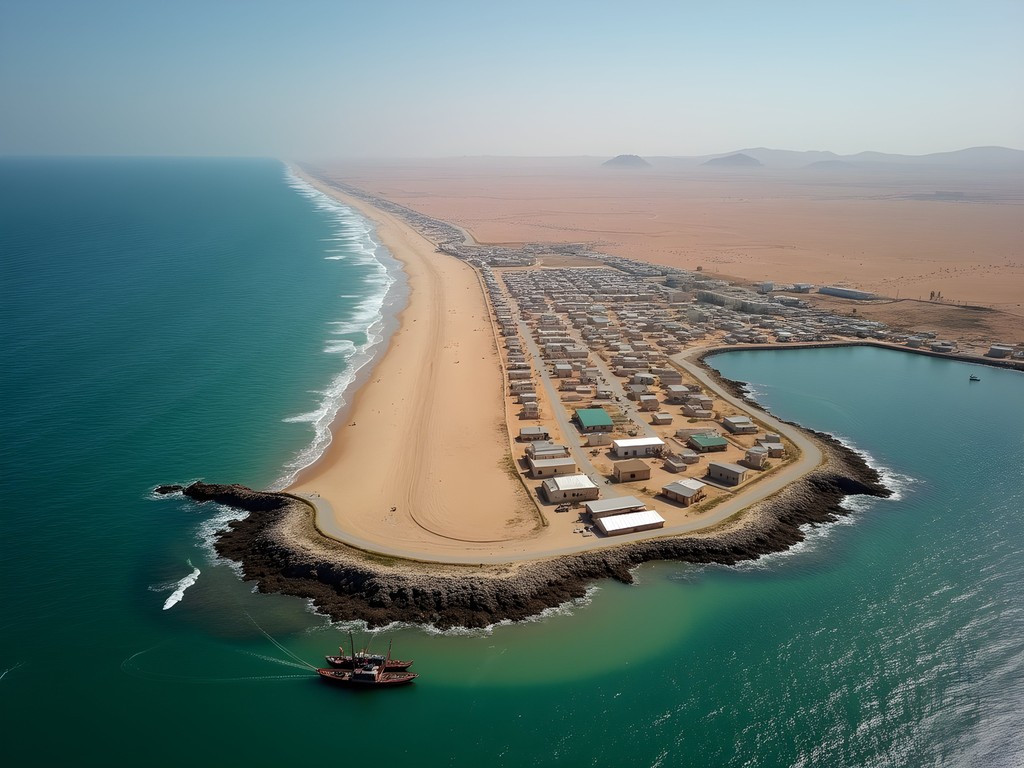
💡 Pro Tips
- Book Hotel Sahara in advance via email rather than online platforms for better rates
- Bring sufficient cash in euros as ATMs are unreliable and many places don't accept cards
- Purchase a local SIM card immediately upon arrival for basic connectivity
The Graveyard of Ships
Nouadhibou harbors a macabre attraction that draws the few travelers who venture here: one of the world's largest ship graveyards. Over 300 rusting vessels line the southern coastline, abandoned due to changing fishing regulations, insurance fraud, or simple obsolescence. I arrange a tour with Hakim, a former fisherman who navigates the political sensitivities of photographing these maritime skeletons – technically forbidden, but possible with local guidance.
We drive along the coast in his battered Toyota, the ocean breeze carrying the metallic tang of oxidizing steel. Hakim points out vessels with histories more complex than their rusting exteriors suggest – Ukrainian fishing trawlers, Spanish cargo ships, even a former Soviet scientific vessel. Each has been stripped of anything valuable, leaving behind hulking monuments to maritime commerce.
'Before cameras, you must understand the context,' Hakim insists, explaining how lax environmental regulations once made Nouadhibou a convenient disposal site. 'Now the government tries to clean, but the task is enormous.'
We walk carefully among the nearest wrecks, their hulls partially submerged in sand and shallow water. Ravens nest in abandoned wheelhouses. The textures are a photographer's dream – rust blooms across metal surfaces in fractal patterns, creating natural abstractions against the stark blue sky. I'm grateful for my weather-resistant camera as salt spray occasionally gusts inland when waves break against the decaying hulls.
The ship graveyard embodies the environmental contradictions I've encountered throughout my travels – simultaneously a man-made ecological problem and a hauntingly beautiful landscape. I spend hours photographing the interplay of natural reclamation and human abandonment, watching as sunset transforms the rusting giants into bronze sculptures against the darkening sea.
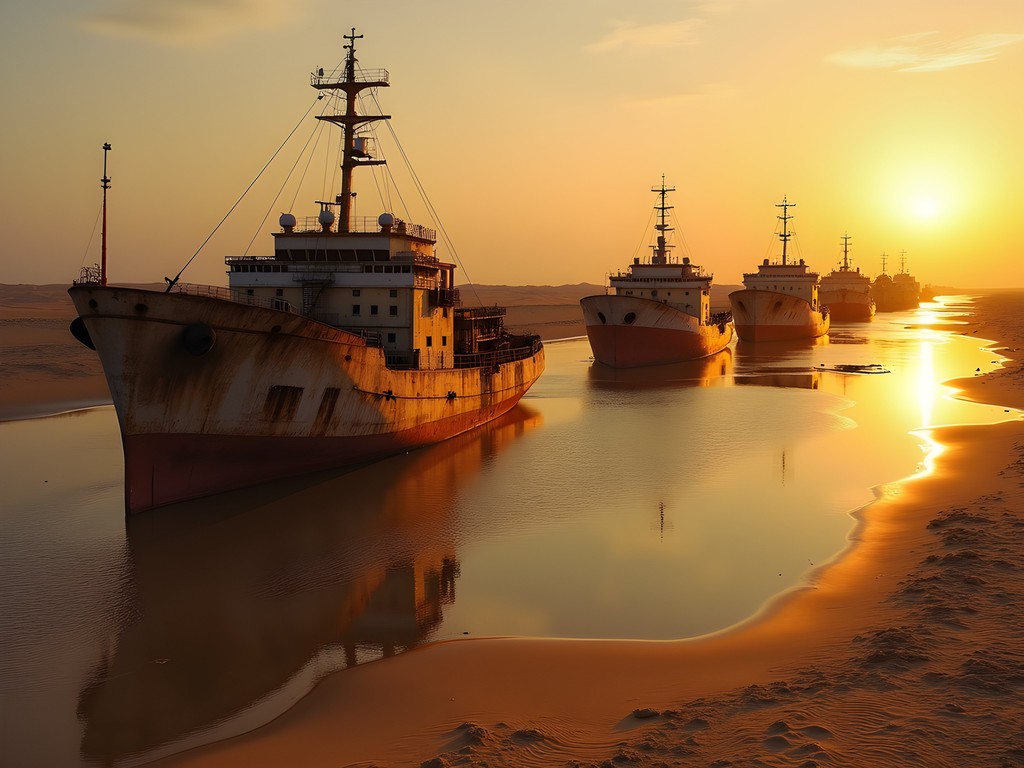
💡 Pro Tips
- Hire a local guide like Hakim through your hotel for access to the ship graveyard
- Bring a telephoto lens for detailed shots of distant vessels
- Visit in late afternoon when the light transforms the rusting metal into photographic gold
Desert Meets Ocean: The Cap Blanc Peninsula
The true ecological marvel of Nouadhibou lies at its northernmost reach – Cap Blanc (or Ras Nouadhibou), where the peninsula narrows to a sandy spine with Morocco's contested Western Sahara territory visible across a narrow strait. This remote headland hosts one of nature's most improbable sanctuaries: the largest surviving colony of Mediterranean monk seals.
Reaching the cape requires permits and persistence. After three days of bureaucratic negotiations facilitated by my hotel owner, I secure passage with a research monitoring team making their monthly census. We depart before dawn in a sturdy 4x4, the binoculars I've carried through a dozen countries hanging ready around my neck.
The landscape transforms as we travel northward – first through the city's industrial outskirts, then past military checkpoints, and finally onto unmarked tracks through wind-sculpted dunes that cascade directly into the Atlantic. The peninsula narrows until water flanks both sides of our route, creating the disorienting sensation of driving atop the ocean itself.
'There,' whispers Mariam, the Mauritanian marine biologist leading our expedition, pointing toward a cluster of dark shapes on distant rocks. Through my binoculars, I distinguish the sleek forms of monk seals hauled out on the shoreline – members of a species numbering fewer than 700 worldwide. Their presence here, where the harshest desert on earth meets the sea, feels like a biological impossibility made real.
We spend hours observing from a respectful distance as Mariam records identifying markings and behavior patterns. The seals seem equally curious about us, occasionally raising their heads to assess our presence before returning to their sun-soaked slumber. When a mother and pup emerge from the water to join the colony, even the researchers exchange excited whispers – new births represent hope for this critically endangered species.
The convergence of ecosystems here creates a unique microclimate. Ocean fog rolls across desert dunes, sustaining patches of vegetation that shouldn't logically exist. Coastal birds I recognize from other continents feed alongside desert specialists. It's precisely this type of ecological transition zone that first drew me to environmental writing – places where established rules bend and adaptation creates unexpected possibilities.

💡 Pro Tips
- Arrange permits for Cap Blanc through your accommodation at least 3-4 days in advance
- Bring at least 2 liters of water per person even for short excursions
- Pack layers – the temperature difference between sunny areas and fog-covered sections can exceed 20°F
Into the Void: Desert Expedition to Adrar
Nouadhibou's true value to adventure travelers lies in its position as the northern gateway to Mauritania's interior – specifically, the legendary Adrar region with its ancient caravan cities and star-dune formations. After a week exploring the peninsula, I connect with Ibrahim, a Tuareg guide recommended by fellow travelers encountered in Senegal months earlier.
Planning a desert expedition requires meticulous preparation. We spend two days gathering supplies in Nouadhibou's markets – everything from fuel reserves to dried camel meat, negotiations conducted in a blend of broken French and hand gestures. Ibrahim inspects my gear with critical eyes, approving my desert-tested clothing and water filtration system but insisting I purchase additional head coverings against sandstorms.
We depart before sunrise in Ibrahim's modified Land Cruiser, heading east away from the coast. The transition is abrupt – within an hour, all traces of maritime influence vanish, replaced by a landscape of increasing desolation. The paved road ends unceremoniously, continuing as a track marked only by the passage of previous vehicles across stone and sand.
'Now we are truly in the Sahara,' Ibrahim announces as we stop to deflate tires for better traction. The silence is absolute, broken only by the whisper of wind across dunes. Having spent significant time in the American Southwest and Australia's outback, I'm still unprepared for the Sahara's scale – an ocean of land where distance becomes an abstract concept rather than a measurable quantity.
Over the next five days, we travel deeper into Adrar province, camping each night beneath stars so brilliant they cast shadows. We visit the ancient desert trading post of Chinguetti, where libraries hold manuscripts dating back centuries, protected from the desert's harsh elements by traditional methods passed through generations. In the Richat Structure – the 'Eye of the Sahara' visible from space – we hike across geological formations that have puzzled scientists for decades.
Throughout the journey, Ibrahim shares Tuareg perspectives on the landscape, pointing out navigation markers invisible to untrained eyes and identifying plants with medicinal properties. These indigenous knowledge systems reflect generations of adaptation to one of Earth's most challenging environments – the kind of deep ecological understanding increasingly lost in our digitized world.
Returning to Nouadhibou after our interior expedition, the city's modest amenities suddenly seem luxurious. The first shower washing away days of accumulated desert dust becomes a transcendent experience. Even the simplest meal of fresh fish tastes extraordinary after days of preserved provisions.
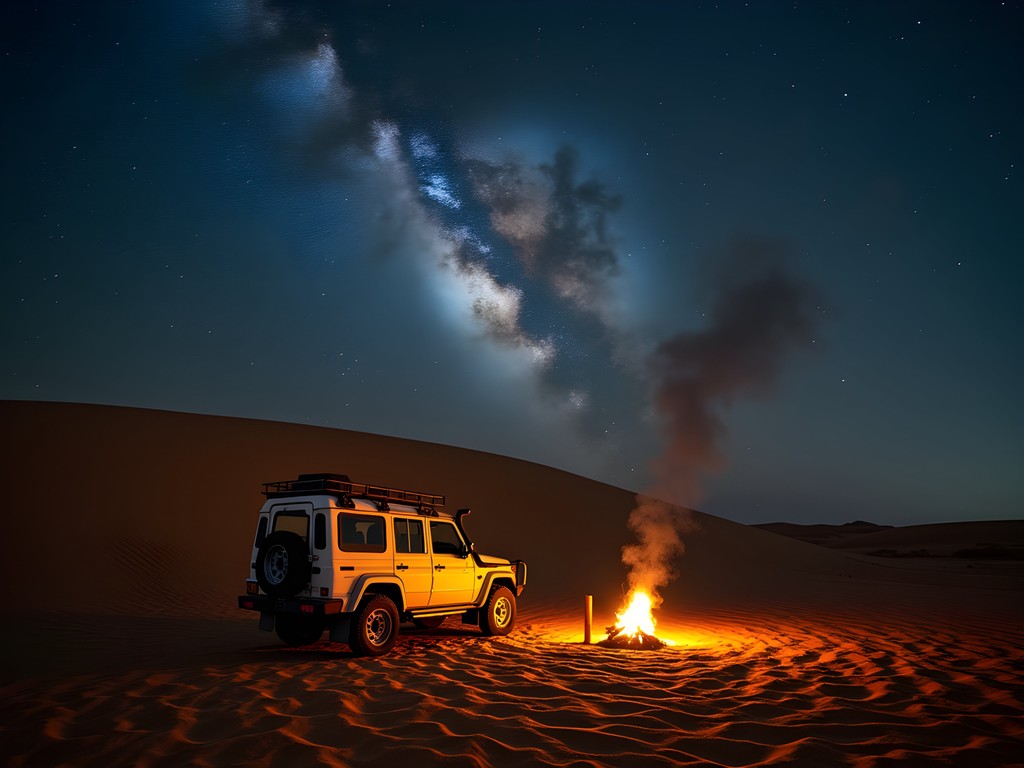
💡 Pro Tips
- Book desert guides through personal recommendations rather than online – reputation is everything in the Sahara
- Register your expedition with your embassy before departing Nouadhibou
- Pack twice as many batteries/power banks as you think you'll need – solar options are unreliable during sandstorm season
The Fishing Life: A Day with Imraguen Fishermen
My final days in Nouadhibou are spent exploring its primary economic engine – the fishing industry that sustains the city despite its remote location. Through connections at my hotel, I arrange to join an Imraguen fishing crew for a day at sea. The Imraguen are indigenous fishermen whose traditional methods date back centuries along Mauritania's coast.
We launch before dawn from the commercial harbor, navigating past larger industrial vessels toward the open Atlantic. The wooden boat, called a lanche, creaks reassuringly as we cut through gentle swells. Captain Sidi, whose father and grandfather fished these same waters, navigates by memory and subtle environmental cues rather than instruments.
'Today good day for fish,' he declares confidently in limited English, pointing to patterns in the water visible only to experienced eyes. 'Birds tell us where to look.'
Indeed, as the sun rises, we follow congregations of seabirds to locate schools of fish. The crew works with practiced efficiency, deploying nets using techniques that minimize bycatch of unintended species. I assist where possible but primarily observe, documenting their methods with my waterproof camera as we roll on the ocean swells.
By midday, the boat's hold contains a modest but diverse catch – primarily mullet and sea bream destined for local markets rather than export. As we prepare to return to harbor, Sidi demonstrates traditional fish preservation methods passed through generations, showing me how certain species are dried using only sea salt and sun.
The Imraguen face mounting challenges from industrial fishing fleets that have depleted stocks through unsustainable practices. Their traditional knowledge – including seasonal migration patterns and sustainable harvest methods – represents an alternative approach to resource management increasingly validated by marine conservation science.
Back at harbor, I witness the economic ecosystem surrounding the catch – the rapid sorting, negotiating, and distribution that connects these fishermen to the broader community. Women predominate in the processing work, their hands moving with remarkable speed to clean and prepare fish for market. The entire scene operates on implicit understanding rather than formal structure – a community economic system evolved over generations.
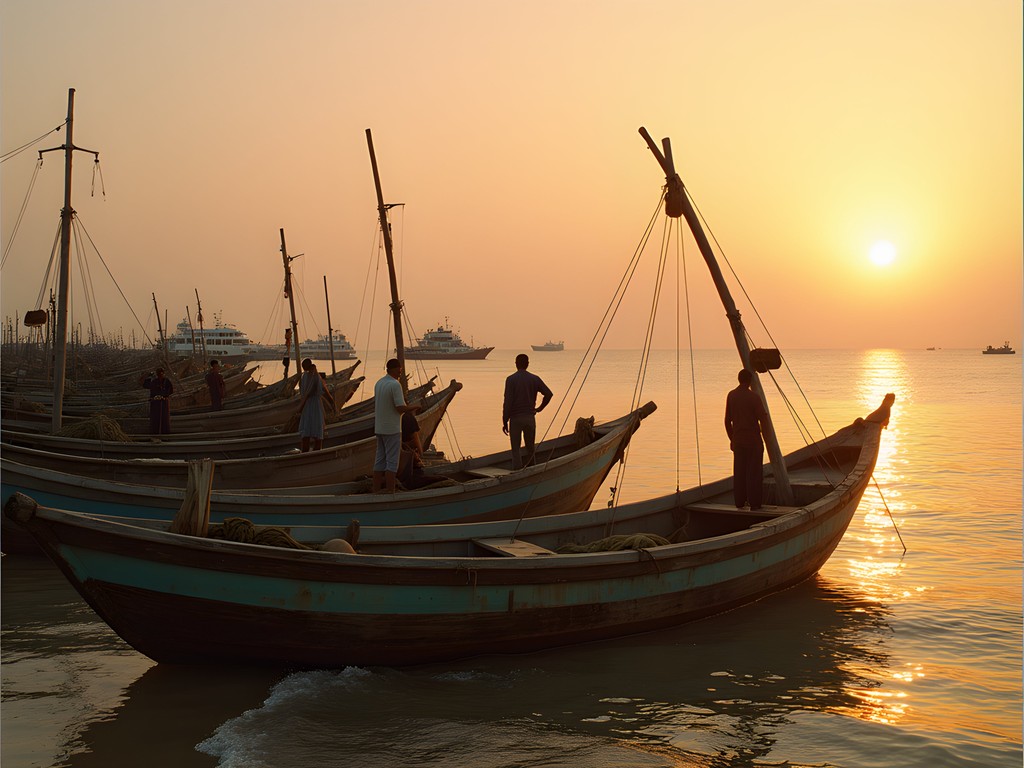
💡 Pro Tips
- Arrange fishing excursions through your hotel rather than directly at the harbor
- Bring motion sickness medication even if you normally have good sea tolerance
- Wear clothes you don't mind getting permanently fish-scented
Final Thoughts
As my taxi returns along the same desert highway toward Nouakchott's international airport, I find myself reluctant to leave Nouadhibou behind. This overlooked coastal outpost offers precisely what I seek in travel – authentic cultural exchanges, ecological marvels where disparate worlds collide, and landscapes that remain genuinely wild rather than curated for tourism. The challenges of visiting – bureaucratic hurdles, limited infrastructure, communication barriers – serve as effective filters, preserving experiences increasingly rare in our hyperconnected world. For the right traveler – self-sufficient, patient, and genuinely curious – Nouadhibou offers not just a gateway to Saharan adventure but a destination worthy in itself. As the peninsula recedes in the distance, I'm already planning my return during the opposite season, when different migratory species pass through this remarkable convergence of desert and sea. Some places leave their mark not through conventional beauty but through the raw authenticity of their character. Nouadhibou is unmistakably such a place – a reminder that the most profound travel experiences often await where the question 'Why there?' is met with the simple answer: 'Because few do.'
✨ Key Takeaways
- Nouadhibou offers unique access to both maritime ecosystems and Saharan desert expeditions
- Local guides are essential for navigating both cultural protocols and remote regions safely
- The ecological transition zone between ocean and desert creates biodiversity hotspots worth exploring
- Winter provides the most comfortable temperatures for both coastal and interior exploration
📋 Practical Information
Best Time to Visit
November through February (winter)
Budget Estimate
$30-50 per day excluding desert expeditions
Recommended Duration
7-14 days
Difficulty Level
Challenging

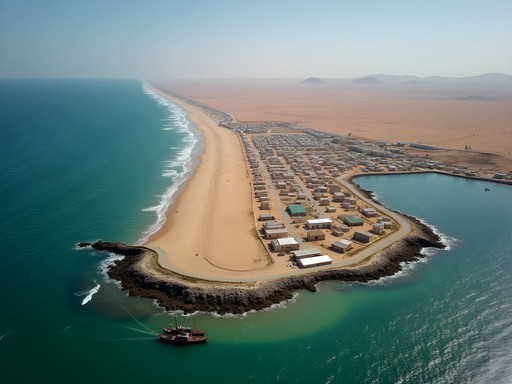






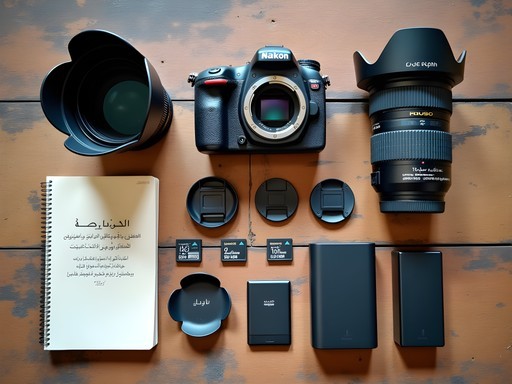
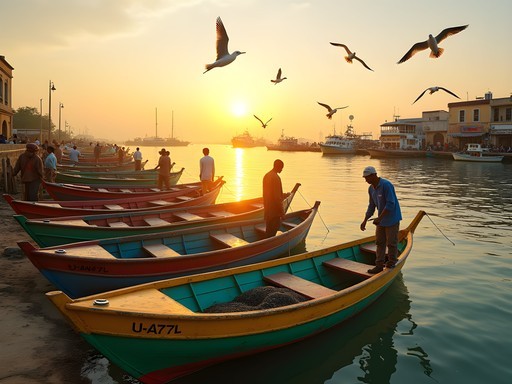






Comments
tripbackpacker
Just got back from Mauritania and used this post as inspiration! The ship graveyard was even more impressive in person. We stayed at the same guesthouse you mentioned and the owner remembered you, Riley! Said you were taking notes constantly haha. Thanks for putting Nouadhibou on my radar!
Sarah Powell
Riley, your description of that moment when the desert meets the ocean perfectly captures what makes Mauritania so special. For anyone considering this journey, I'd add that the cultural aspect deserves attention too. The mix of Berber, Arab, and sub-Saharan influences creates fascinating interactions. Language tip: French gets you further than English, but learning a few Arabic greetings opens many doors. The food scene in Nouadhibou is surprisingly good - try the fish tagine at the port where it's freshest. And while the Iron Ore train is iconic, prepare for it to be genuinely uncomfortable - worth it, but not romantic!
redclimber
Sarah, did you find it easy to exchange money there? Or better to bring euros/dollars?
Sarah Powell
Bring euros - much easier to exchange and widely accepted at hotels. ATMs are unreliable and often empty. Keep small bills for daily expenses.
Sarah Powell
This post brings back memories of my 2023 visit to Mauritania. Nouadhibou is indeed a fascinating gateway to the Sahara. A few practical notes for anyone planning a trip: the visa situation has improved but still requires patience - I recommend applying at least 3 weeks in advance. For the Cap Blanc Peninsula, hiring a 4x4 is essential as the sand can be treacherous. The monastery ruins Riley mentioned are actually closed on Mondays and Tuesdays for conservation work. Also worth noting that mobile connectivity is surprisingly good in Nouadhibou itself but vanishes quickly once you head into the desert. Excellent reporting on a truly underrated destination.
roamlife
I went to Nouadhibou three years ago and it was one of the most surreal travel experiences I've had. The ship graveyard is even more impressive in person - bring good shoes though, lots of rusty metal! We hired a guide through our guesthouse for the Cap Blanc Peninsula trip which was worth every ouguiya. The colony of monk seals was amazing to see. One tip: I found my satellite messenger essential there since cell service is basically non-existent once you leave town. Great write-up Riley!
tripmaster
How many days would you recommend staying there? Is it worth the journey from Nouakchott?
roamlife
Definitely worth it! I'd say 3-4 days minimum - one for the ship graveyard, one for Cap Blanc, and at least one buffer day for the inevitable transport delays. The Iron Ore train experience alone justifies the trip!
Kimberly Murphy
Riley, your post captures the raw beauty of Nouadhibou perfectly! I visited last year and was equally mesmerized by the ship graveyard. Something almost post-apocalyptic about those rusting hulks against the desert. For anyone planning to go, I'd add that the fish market at dawn is another must-see - incredible energy and you can buy fresh catches that local restaurants will cook for you. The journey from Nouakchott was indeed bumpy but part of the adventure. Can't wait to see where you head next!
wanderlustninja
How difficult was it to arrange the desert expedition to Adrar? Looking to do something similar next year.
tripbackpacker
Not Riley, but I did this last month! Found a guide through my hotel in Nouadhibou. Cost about €80/day including everything. Make sure you bring a good headlamp and plenty of water. My water filter was a lifesaver when we were in remote areas.
wanderlustninja
Thanks for the info! €80/day sounds reasonable. Did you need to book way in advance?
tripbackpacker
I arranged it just 2 days before. But this was during low season (August). Might need more notice during peak months.
winterwanderer
That photo of the shipwreck against the sunset is absolutely stunning.
greenadventurer
I was in Mauritania last year but only made it to Nouakchott. Really regret not pushing north to Nouadhibou after reading this! That ship graveyard looks hauntingly beautiful in your photos. Did you feel safe traveling solo there? I heard mixed things about safety in the region.
Kimberly Murphy
I went through Nouadhibou in 2024 and felt completely safe as a solo female traveler. The locals were incredibly hospitable. Just use common sense like anywhere else!
greenadventurer
Thanks Kimberly! That's really reassuring. Might have to plan a return trip now!
globeone
Wow! Finally a post about somewhere truly off the beaten path. Nouadhibou looks incredible!
tripmaster
Those ship graveyard photos are haunting! Added to my bucket list!
Venture X
Premium card with 2X miles, $300 travel credit, Priority Pass